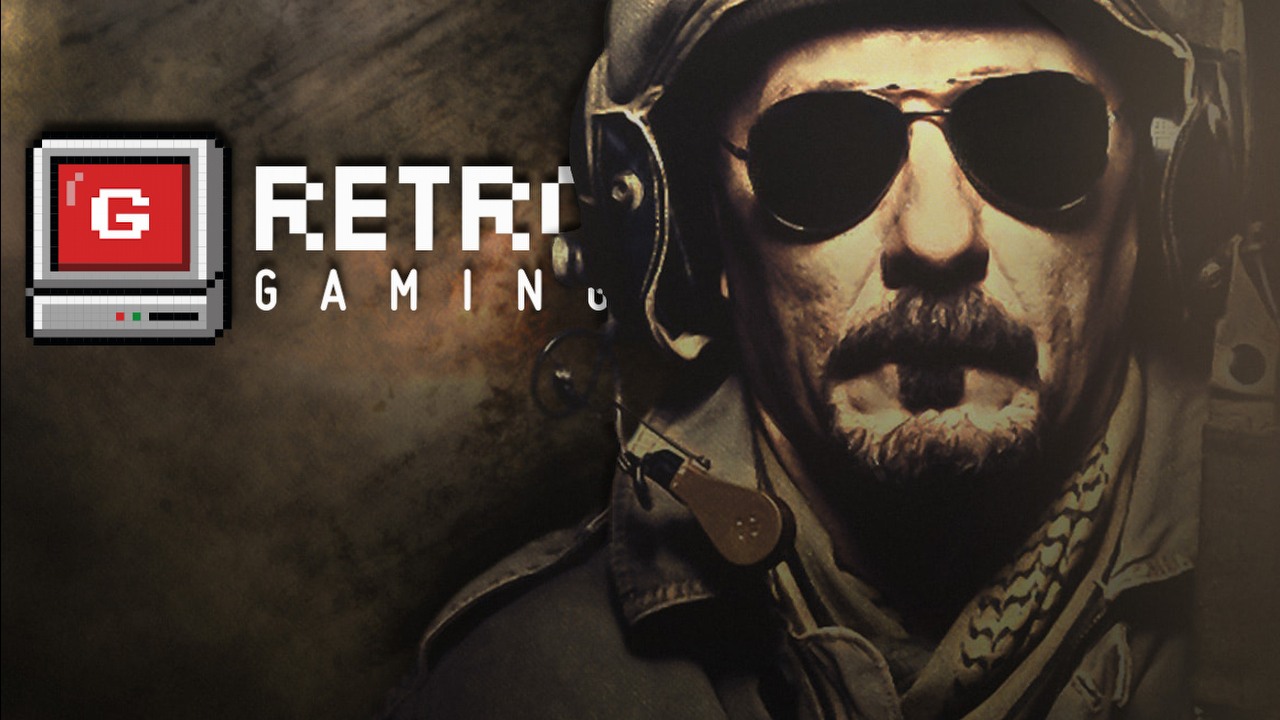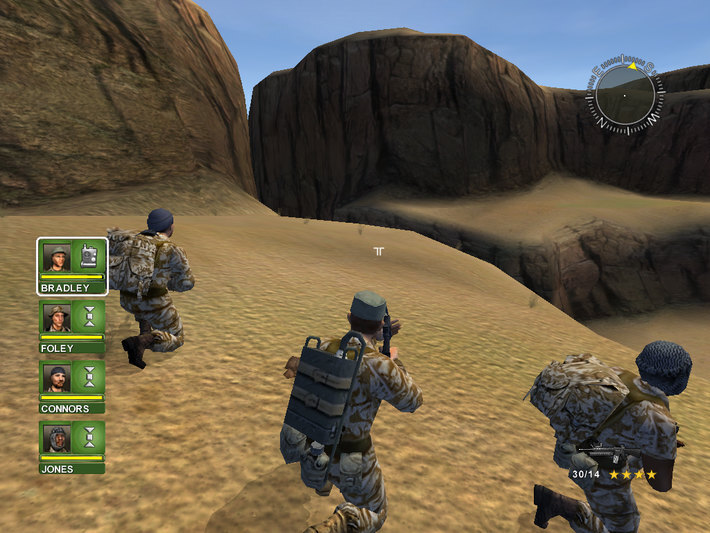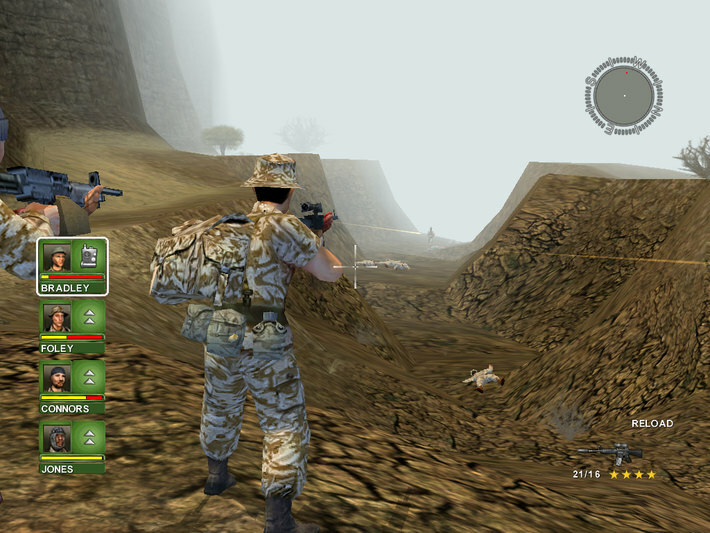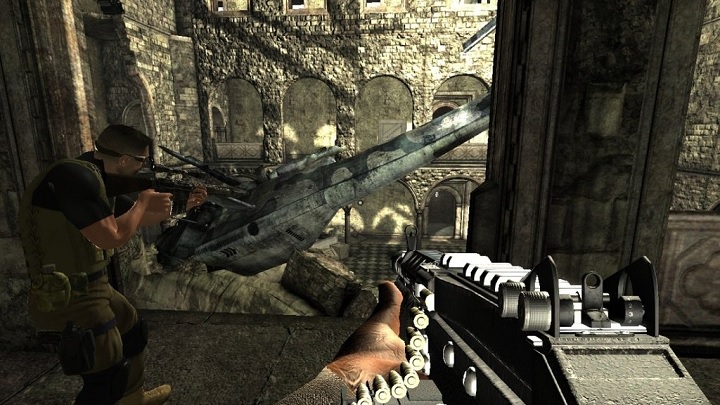
In September 2002, many experts and commentators were no longer debating if the Second Gulf War would occur, but rather when it would take place. Under these circumstances, Pivotal Games studio released the game Conflict: Desert Storm, offering players a glimpse into the previous military operation in that region. Let’s explore whether this game offered something beyond just a timely theme.
Desert Storm on the screen
The conflict known as Desert Storm led us to the Middle East in August 1990. This narrative revolved around American and British special forces, specifically Delta Force and SAS members, who were deployed undercover to hinder Iraq’s aggression towards Kuwait at first. As the operation progressed, they became instrumental in the eventual liberation of the country.

Each chapter of our story was made up of a sequence of interconnected tasks that, ideally, required the coordinated effort of our four-member squad during the 15 missions we undertook. These objectives varied from performing sabotage and attacking military installations such as bridges, airports, bases, and missile launchers, to protecting crucial individuals and civilians, or rescuing prisoners.
Due to the frequent blocking by our adversaries (who usually outnumbered us), we needed to remain vigilant and keep our weapons ready throughout the game. These included pistols, shotguns, rifles such as machine guns, assault rifles, and sniper rifles. We also had rocket launchers and grenades at our disposal, and a night vision device was crucial for nighttime missions.
Additionally, in combat situations, we could employ both aerial and ground assistance (such as calling for an air attack on a specific location or bombarding it with tanks). Furthermore, periodically we were given control over different types of vehicles. As our troops advanced, the abilities of our team members grew, making them more proficient soldiers.
Almost like Ghost Recon?
In the game “Conflict: Desert Storm“, we directed a team of four individuals, prompting comparisons with heavyweights in the tactical shooter genre like Tom Clancy’s Rainbow Six and Tom Clancy’s Ghost Recon. As we played, we had the ability to swap between our soldiers, each distinctly specialized. While controlling one squad member, we issued commands to the rest. The game’s straightforward mechanics and intuitive controls, coupled with a reasonable level of mission difficulty, made it an inviting experience for newcomers, even those who preferred a more action-oriented approach reminiscent of Rambo.
However, this ease of entry was seen as a plus by beginners but as a significant disadvantage by seasoned veterans with extensive experience in similar games. For them, “Conflict: Desert Storm” might have been too simplistic, potentially lacking the challenge they were accustomed to.

As a fan, I found the authenticity of the battlefield settings somewhat dubious. The gear our soldiers carried, particularly their backpacks and pockets, seemed unusually spacious, allowing them to withstand multiple chest shots. Similarly, the maps and missions were linear in nature, requiring us to complete objectives in a rigid sequence. This linearity was convenient due to numerous corridors, even though they were expansive and dotted with larger, open spaces.
In many aspects, the events unfolding felt akin to an exhilarating war film, particularly one revolving around sniper Paul Foley and shooter John Bradley, accompanied by their comrades Mick Connors and David Jones, making it far more cinematic than a typical simulation game.
Console tactics
In creating Conflict: Desert Storm, the developers from Pivotal Games likely had to compromise certain features due to the game’s simultaneous release on multiple platforms, including PlayStation 2, Xbox, PC, and GameCube. This multi-platform approach probably necessitated initial focus on tailoring player controls and abilities to a limited number of controller buttons.
It’s worth noting that the game had different variations, each offering distinct modes of play. For instance, on personal computers, we got both a multiplayer competitive mode along with the story campaign. However, on consoles like PlayStation 2, the cooperative mode was emphasized instead. In this case, PlayStation 2 allowed for solo play, whereas Xbox and GameCube enabled gaming sessions with up to three players.

Moderate success and the birth of a series
The game titled “Conflict: Desert Storm” didn’t receive overwhelming praise from industry media, usually getting ratings like “fives” and “sixes.” However, it managed to win over players. To give you an idea, the PlayStation 2 version of this game was bought by a staggering 800,000 people in the United States alone; additionally, on Metacritic, the game boasts an average rating of 7.8/10 from players.
Seizing the opportunity, developers promptly set to work on a sequel to their initial project, ultimately releasing Conflict: Desert Storm II – Back to Baghdad in 2003. In the following year, Conflict: Vietnam, the third installment of the series, was unveiled, and two years later, Conflict: Global Storm, the fourth game in the series, was introduced.
In the year 2008, the series resurfaced with the game titled Conflict: Denied Ops. Initially, this project was conceived under the name Crossfire, but it was later renamed. Given its marked departure from earlier installments, being a first-person shooter, it’s challenging to consider it as a direct sequel. Not long after its launch in August 2008, Pivotal Games ceased operations.

How to play Conflict: Desert Storm today?
As I type this, the game titled “Conflict: Desert Storm” can be found and purchased on both GOG.com and Steam. In either platform, the game retails for $6.99.
Before we dive into the game, it’s important to note that this title may appear somewhat dated now. At first glance, the environments might seem as though they were carved with an axe, but if you overlook this and some other issues (the gameplay has also lost some of its luster over time), you can still enjoy the experience.
Read More
- INJ PREDICTION. INJ cryptocurrency
- SPELL PREDICTION. SPELL cryptocurrency
- How To Travel Between Maps In Kingdom Come: Deliverance 2
- LDO PREDICTION. LDO cryptocurrency
- The Hilarious Truth Behind FIFA’s ‘Fake’ Pack Luck: Zwe’s Epic Journey
- How to Craft Reforged Radzig Kobyla’s Sword in Kingdom Come: Deliverance 2
- How to find the Medicine Book and cure Thomas in Kingdom Come: Deliverance 2
- Destiny 2: Countdown to Episode Heresy’s End & Community Reactions
- Deep Rock Galactic: Painful Missions That Will Test Your Skills
- When will Sonic the Hedgehog 3 be on Paramount Plus?
2025-01-13 16:32